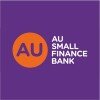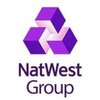
i
Ultra Media and Entertainment
Filter interviews by
Ultra Media and Entertainment Interview Questions and Answers
Ultra Media and Entertainment Interview Experiences
2 interviews found
I applied via Walk-in and was interviewed in Mar 2023. There were 2 interview rounds.

(2 Questions)
- Q1. Knowing Sample Rates? Bit Rate? What Is RMS
- Ans.
Sample rates refer to the number of samples per second in an audio file. Bit rate refers to the number of bits per second used to encode the audio. RMS is a measure of the average power of an audio signal.
Sample rates are typically measured in kHz (kilohertz) and can affect the quality of the audio.
Bit rate can affect the file size and the quality of the audio.
RMS stands for Root Mean Square and is a measure of the ave...
- Q2. What Is diffrent between Sample Rate&Bit Depth
- Ans.
Sample rate is the number of samples per second, while bit depth is the number of bits used to represent each sample.
Sample rate determines the frequency range that can be captured, while bit depth determines the dynamic range of the recording.
Higher sample rates and bit depths result in higher quality recordings, but also larger file sizes.
CD quality audio has a sample rate of 44.1 kHz and a bit depth of 16 bits.
Profe...
Interview Preparation Tips
Audio Engineer Interview Questions asked at other Companies

30 questions and minimum mark required 9
(1 Question)
- Q1. Team interview with HOD and their team
(1 Question)
- Q1. Salary negotiation with current package
(1 Question)
- Q1. Basic safety knowledge
Interview Preparation Tips
Assistant Manager Interview Questions asked at other Companies
Jobs at Ultra Media and Entertainment
Top trending discussions






Interview questions from similar companies

I appeared for an interview before Dec 2020.
(1 Question)
Round duration - 90 Minutes
Round difficulty - Medium
Coding round was conducted in the morning for 1.5 hours from 10:00 am to 11:30 am. Exam was conducted on HACKEREARTH which is a user-friendly platform with various edge test-cases. Since exam was done through online mode due to COVID-19, therefore camera was on for invigilation. A well working camera and microphone were needed for successful completion of exam.
- Q1.
Words Magic with Prefix Replacement Problem
Ninja is provided with a dictionary of words,
WORDS, and a sentence,SENTENCE, which consists of words separated by spaces. The goal is to minimize the size of ... - Ans.
The goal is to minimize the size of a sentence by replacing words with prefixes from a given dictionary.
Iterate through each word in the sentence and check if a prefix exists in the dictionary
Replace the word with the smallest prefix found in the dictionary
Repeat the process for all words in the sentence
Interview Preparation Tips
Tip 1 : Do not totally depend on past interview questions or as such unless and until you have a strong foundation. Just build the foundation first in starting months.
Tip 2 : More focus should be on problem-solving skills. Develop the skills of using applications.(Eg.: Where one should use Hashmap, Arraylist, etc.)
Tip 3 : Try to solve the problem on your own. Just sink yourself into the question so much that you don't need to look for the solution.(Figure out solution in your own way).
Tip 4 : Regarding project, quantity doesn't matter but what matters the most is you should know about the project from start to end. Able to explain the project clearly. Be ready with technical as well as Behavioral questions.
Tip 1 : Get rid of irrelevant topics or headings.(Eg. Stood 1st in Annual Sack Race Competition.)
Tip 3 : Make sure you don't keep anything which create problem at time of Interview.
Tip 4 : Short and crisp Resume with each spelling checked twice.
Tip 5 : Keep updating your resume based on addition of Internship/Projects, etc.
Tip 6 : Keep the file name(Resume saved as pdf or any format) decent too.

I applied via Naukri.com and was interviewed in Apr 2021. There was 1 interview round.
Interview Questionnaire
1 Question
- Q1. They ask about me myself and my strength and weakness
Interview Preparation Tips

I applied via WorkIndia and was interviewed before Jul 2020. There were 4 interview rounds.
Interview Questionnaire
1 Question
- Q1. All questions were related to finance
Interview Preparation Tips

I applied via Campus Placement and was interviewed before Apr 2020. There were 4 interview rounds.
Interview Questionnaire
9 Questions
- Q1. Why Should we hire you?
- Q2. Tell me you ability to work under pressure?
- Q3. What are your expectations from job?
- Q4. Describe your management style?
- Q5. How long would you expect to work for us if hired?
- Q6. How do you see yourself 5 years from now?
- Q7. What is your weakness?
- Q8. What is your strength?
- Q9. Do you have any questions for us?
Interview Preparation Tips

I appeared for an interview before Sep 2020.
(3 Questions)
Round duration - 90 minutes
Round difficulty - Medium
The coding round consisted of 3 coding questions. 1st question was of 20 marks, 2nd and 3rd of 50 marks.
- Q1.
Minimum Number of Operations Problem Statement
Given an array 'ARR' consisting of 'N' positive integers, determine the minimum number of operations needed to make all elements of the array equal. You may ...
- Ans.
Determine minimum operations to make all array elements equal using addition, subtraction, multiplication, or division.
Iterate through array to find the minimum and maximum values
Calculate the difference between the maximum and minimum values
Return the difference as the minimum number of operations needed
- Q2.
Avoiding Traps Problem Statement
Given an array of obstacles' coordinates, determine the minimal jump length to reach beyond all obstacles starting from coordinate 0 while avoiding landing on any obstacle...
- Ans.
Find the minimal jump length to bypass all obstacles while avoiding landing on any obstacle.
Iterate through the obstacle coordinates to find the maximum coordinate.
Calculate the minimum jump length needed to bypass all obstacles.
Ensure the jump length consistently avoids all obstacle points.
The final jump can overshoot the line's end point.
- Q3.
Longest Consecutive Sequence Problem Statement
You are given an unsorted array/list ‘ARR’ of ‘N’ integers. Your task is to return the length of the longest consecutive sequence.
The consecutive sequence ...
- Ans.
Find the length of the longest consecutive sequence in an unsorted array of integers.
Sort the array to make it easier to identify consecutive sequences.
Use a set to store unique elements and check for consecutive numbers.
Track the length of consecutive sequences and update the maximum length found.
Handle duplicates by counting only one occurrence in the consecutive sequence.
Round duration - 45 minutes
Round difficulty - Easy
Timing: 10:15 - 11:00 am.
The interview was online from home.
(1 Question)
Round duration - 45 minutes
Round difficulty - Medium
Timing: 2:15 - 3:00 PM
The interview was online from home.
There were a few audio cuts in the video call but we were able to manage regardless.
- Q1.
Reverse a String Problem Statement
Given a string
STRcontaining characters from [a-z], [A-Z], [0-9], and special characters, determine the reverse of the string.Input:
The input starts with a single i... - Ans.
Reverse a given string containing characters from [a-z], [A-Z], [0-9], and special characters.
Iterate through the characters of the string in reverse order and append them to a new string.
Use built-in functions like reverse() or StringBuilder in languages like Python or Java for efficient reversal.
Handle special characters and numbers along with alphabets while reversing the string.
Ensure to print each reversed string
Interview Preparation Tips
Tip 1 : For OOPS, DS and programming, I recommend Codezen, Leetcode, InterviewBit and GeeksforGeeks.
Tip 2 : For OS, DBMS and Computer Network, I recommend GateSmasher, Knowledge Gate and TutorialsPoint.
Tip 3 : For SQL, I recommend W3Schools and GeeksforGeeks.
Tip 4 : Always maintain your cool during Interviews, and answer the questions calmly. If you get stuck in a problem, do not hesitate to ask for hints.
Tip 1: Mention only those projects and internships in your resume that you are comfortable with, that is, you can explain to the interviewee.
Tip 2: Mention only those skills/programming languages in your resume that you are comfortable with, that is, you have proper knowledge of as the interviewee can ask questions from those languages specifically.
Tip 3: Keep your data in your resume honest and accurate.
Skills evaluated in this interview

Assistant Manager Interview Questions & Answers
AU Small Finance Bankposted on 3 May 2021
Interview Questionnaire
2 Questions
- Q1. About youself
- Q2. About bank services
Interview Preparation Tips

Interview Questionnaire
1 Question
- Q1. Written test followed by couple of technical interviews

Interview Questionnaire
1 Question
- Q1. Mostly From Resume, Be Confident on what you know
Ultra Media and Entertainment Interview FAQs
Tell us how to improve this page.
Interview Questions for Popular Designations
Ultra Media and Entertainment Interview Process
based on 3 interviews
Interview experience
Interview Questions from Similar Companies
Ultra Media and Entertainment Reviews and Ratings
based on 63 reviews
Rating in categories
|
Graphic Designer
9
salaries
| ₹1.8 L/yr - ₹4 L/yr |
|
Executive Accountant
8
salaries
| ₹2.5 L/yr - ₹4.8 L/yr |
|
Video Editor
8
salaries
| ₹3 L/yr - ₹4.7 L/yr |
|
Senior Legal Executive
8
salaries
| ₹6.6 L/yr - ₹8 L/yr |
|
HR Executive
7
salaries
| ₹3.2 L/yr - ₹4 L/yr |

AU Small Finance Bank

Equitas Small Finance Bank

Standard Chartered

Deutsche Bank
- Home >
- Interviews >
- Ultra Media and Entertainment Interview Questions








